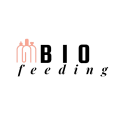Expert Tips for a Comforting Baby Bottle Feeding Experience
Understanding Your Baby’s Needs
A key facet of fostering a comfort feed is understanding your baby’s cues and needs. Some of the most common signs of hunger include:
- Crying or fussing
- Mouthing movements or sucking on their hands
- Increased alertness or physical activity
Recognizing these indications can help you initiate feeding before your baby becomes overly hungry and distressed, ensuring a more soothing feeding experience.
Establishing a Comfortable Environment
Creating a calm and comfortable environment for your baby during bottle feedings can make a significant difference in their overall experience. Some ways to achieve this include:
- Maintaining a consistent feeding spot to help your baby associate it with mealtime
- Avoiding distractions like loud noises or bright lights that can unsettle your baby
- Using a comfortable chair that provides good back support for you and a cozy spot for your baby
Offering Cuddles and Affection
One of the reasons breastfeeding can be so comforting for babies is the close physical contact with their mother. You can recreate this during bottle feedings by holding your baby close, making eye contact, and talking softly to them. This helps to maintain the emotional connection and makes feeding a positive, reassuring experience.
Choose the Right Bottle and Nipple
The type of bottle and nipple you use can significantly affect your baby’s feeding comfort. The ideal bottle and nipple will depend on factors like your baby’s age, feeding style, and personal preference. You can find more advice on selecting the right bottle feeding equipment on reputable parenting sites like NHS.
Avoiding Common Bottle-Feeding Mistakes
Many parents make some common mistakes when transitioning their baby from breastfeeding to bottle-feeding. These errors can make the process more challenging and less comfortable for both of you. To avoid these pitfalls:
- Don’t rush the switching process – introduce the bottle gradually and patiently
- Ensure the milk is at the correct temperature – it should be body temperature, not too hot or cold
- Try different feeding positions to find what works best for your baby
Seeking Professional Guidance
If you’re struggling with the transition from breastfeeding to bottle-feeding, don’t hesitate to seek professional advice. Trained pediatricians and lactation consultants can provide helpful guidance and resources. Websites like HealthyChildren.org offer excellent information on discontinuing the bottle and making the transition smoother.
In the end, remember that every baby is unique, and what works well for one may not work for another. The key is to stay patient, persist, and keep your baby’s comfort as your top priority during bottle feedings.
Understanding Bottle-Feeding vs Breastfeeding
The differences between bottle-feeding and breastfeeding are not just in the method but also in the emotional aspects. Breastfeeding creates a special bond between mother and baby, but this bond can also be fostered through bottle feeding. Paying extra attention to your baby during bottle-feeding sessions, making eye-contact, and cradling them close can mimic the closeness achieved through breastfeeding.
For additional guidelines, seek out reliable resources like Kids Health which provide valuable tips on bottle-feeding and the transition from breastfeeding.
Finding the Right Bottle-Feeding Technique
Understanding your baby’s feeding habits is paramount to a smooth-sailing bottle-feeding routine. When you observe your baby’s feeding style, you might notice that they feel more comfortable being fed in a certain position or may prefer a certain type of bottle. For example, some babies like being cradled while others prefer sitting up.
Also, use slower-flow nipples for newborns to prevent gulping and swallowing air, which can cause discomfort and gas. As they grow, you can switch to faster flowing nipples.
A good source for information about bottle-feeding techniques can be found on the CDC’s official websites .
How to Properly Prepare a Bottle
Hygiene plays a crucial part in bottle-feeding. It’s essential to clean and sanitize your baby’s bottles and nipples after each use to ensure they are free from dangerous bacteria. Moreover, always check the temperature of the milk before feeding your baby to prevent burns. For handy instructions on how to bottle-feed your baby, check out this useful guide on Nationwide Children’s Hospital’s website.
Alternatives to Bottle-Feeding
If your baby refuses the bottle or exhibits feeding problems, you may want to consider alternative feeding methods. For some mothers, combining breastfeeding and bottle-feeding—a practice commonly known as mixed feeding—is a viable option. In other cases, solutions may involve experimenting with different nipple sizes and bottle types or using expressed breastmilk in the bottle. Consult healthcare providers or resources like WIC Breastfeeding for more information.
Practice Makes Perfect
Remember, it may take some time for your little one to become comfortable with the bottle. Don’t rush the process—allow your baby to become acquainted with the bottle at their own pace. With patience, consistency, and a little bit of practice, bottle-feeding can become a comfortable, even enjoyable, experience for both you and your baby.
The most important thing to remember during this transition is that your love, care, and attention are far more important than whether the milk comes from a bottle or the breast. Regardless of your chosen method, feeding time should always be an opportunity for you and your baby to connect and bond.

